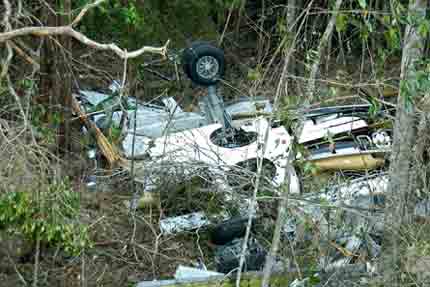- Turkish investigators have confirmed that a navigation error led to the controlled flight into terrain of an Atlasjet Boeing MD-83 near Isparta on 30 November 2007. The crew followed an incorrect heading, off by 30°, while conducting the night approach to Isparta airport. The aircraft, wet-leased from World Focus Airlines, struck Turbetepe mountain about 19km (10nm) from Isparta's runway, killing all 57 on board.
The World Focus first officer had 14.2h on the MD-83, whereas Turkish regulations require 100h. The report reveals that the aircraft had technical problems not recorded in maintenance logs, including failed flight recorders. Examination of the enhanced ground-proximity warning system also showed that the device was malfunctioning.
- In an appendix to the Brazilian investigation agency Cenipa's final report into the 29 September 2006 fatal mid-air collision between an Embraer Legacy 600 business jet and a Gol Transportes Aéreos Boeing 737-800 over the Amazon, the US National Transportation Safety Board said: "This accident was caused by N600XL [the Legacy] and Gol 1907 following ATC clearances, which directed them to operate in opposite directions on the same airway at the same altitude, resulting in a mid-air collision."
 |
|---|
All 154 passengers and crew on board the Gol 737 died in the collision, when the damaged aircraft plunged to the forest floor from 37,000ft (11,285m). The Legacy (N600XL), on a delivery flight operated by its new owner, US air taxi operator Excelaire, made an emergency landing with damage to its left winglet and left horizontal stabiliser.
Brazilian investigation agency Cenipa believes the most likely cause of the unintended deactivation of the Embraer Legacy's transponder - which disabled the traffic and collision avoidance system - took place as the commander sought fuel data using the avionics.
Cenipa drew up five hypothetical scenarios to explain the sudden disappearance of the secondary radar return for the Legacy from radar screens. Access to the transponder is through the radio management unit, and it claims flight-recorder evidence suggests the commanders was using its display to assist the co-pilot with fuel calculations. Fuel information and the collision-avoidance system's status are contained on separate display pages in the unit's display. Cenipa says: "While the [commander] was apparently trying to clarify the issue of the fuel status...his radio management unit was used in a way that changed the transponder to 'standby'."
Cenipa's verdict is: "The loss of effective air traffic control was not the result of a single error, but of a combination of numerous individual and institutional ATC factors that reflected systemic shortcomings in emphasis on positive air traffic control concepts. Further contributing to the accident was inadequate communication between ATC and the N600XL flightcrew."
The NTSB says: "These deficiencies include a lack of timely ATC action after the loss of N600XL's transponder [return] and [loss of] two-way radio communication, and features of the ATC software that may have aggravated deficiencies in altitude clearance awareness for N600XL."
Source: Flight International























